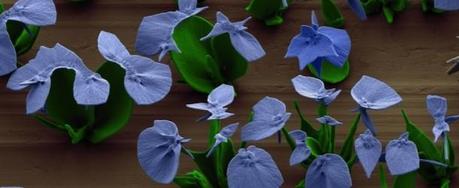

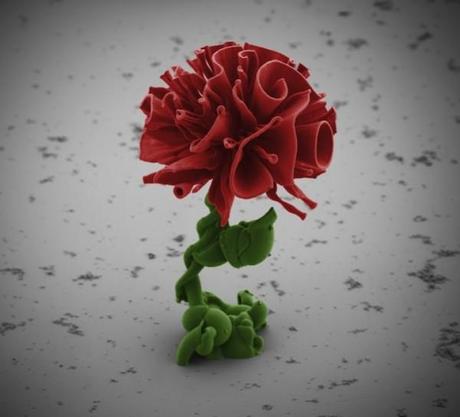
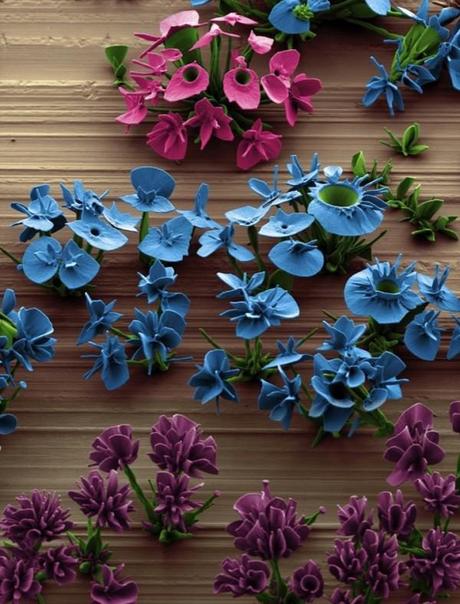
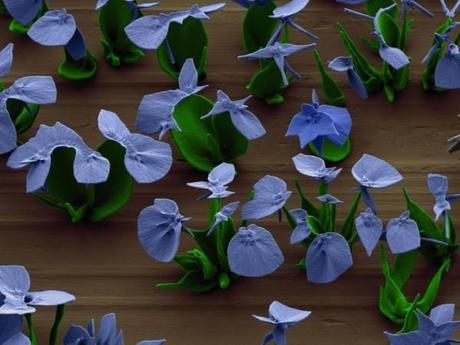

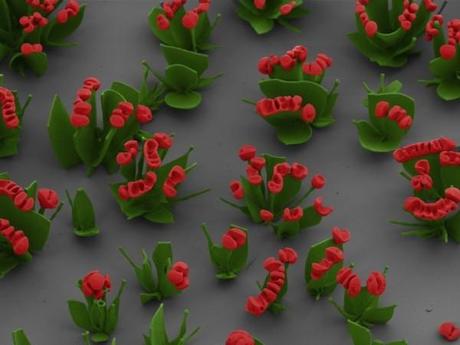
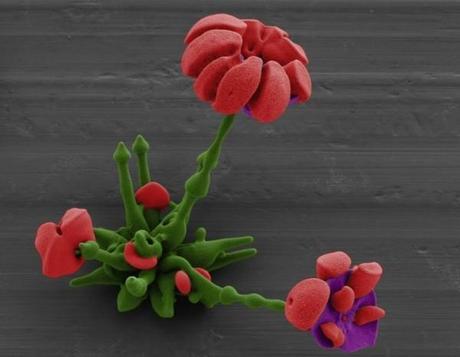
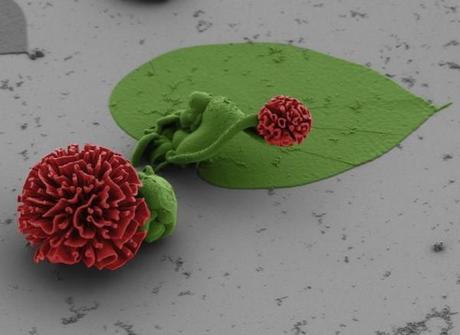
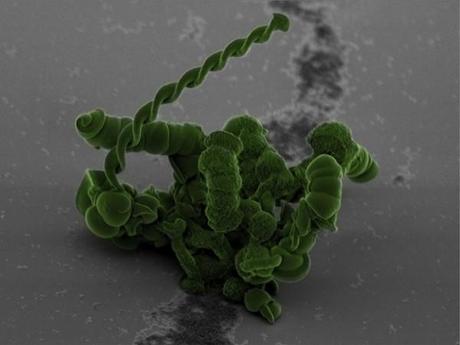
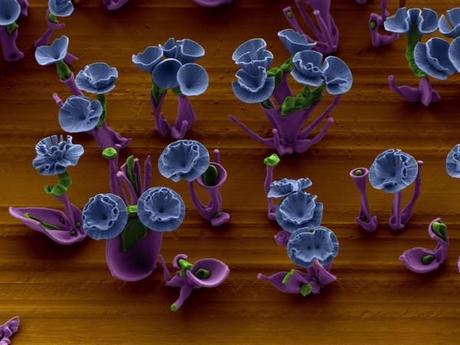
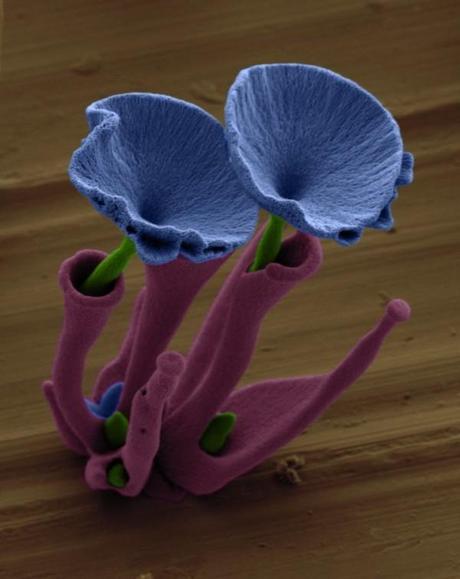
Harvard School of Engineering and Applied Sciences (SEAS) post-doctoral fellow Noorduin hhas found that he can control the growth behavior of these crystals to create precisely tailored structures.
“To create the flower structures,” Harvard SEAS explains, “Noorduin and his colleagues dissolve barium chloride (a salt) and sodium silicate (also known as waterglass) into a beaker of water. Carbon dioxide from air naturally dissolves in the water, setting off a reaction which precipitates barium carbonate crystals. As a byproduct, it also lowers the pH of the solution immediately surrounding the crystals, which then triggers a reaction with the dissolved waterglass. This second reaction adds a layer of silica to the growing structures, uses up the acid from the solution, and allows the formation of barium carbonate crystals to continue.”
It is well documented that chemical gradients influence growth in nature; for example curved marine shells are formed from the calcium carbonate under the water. Noorduin says, “For at least 200 years, people have been intrigued by how complex shapes could have evolved in nature. This work helps to demonstrate what’s possible just through environmental, chemical changes.” The fields of self-assembled flowers present the results of precise changes like altering pH gradients to create “broad, radiating leaves, a thin stem, or a rosette of petals.”
via ScienceMag, Harvard SEAS
